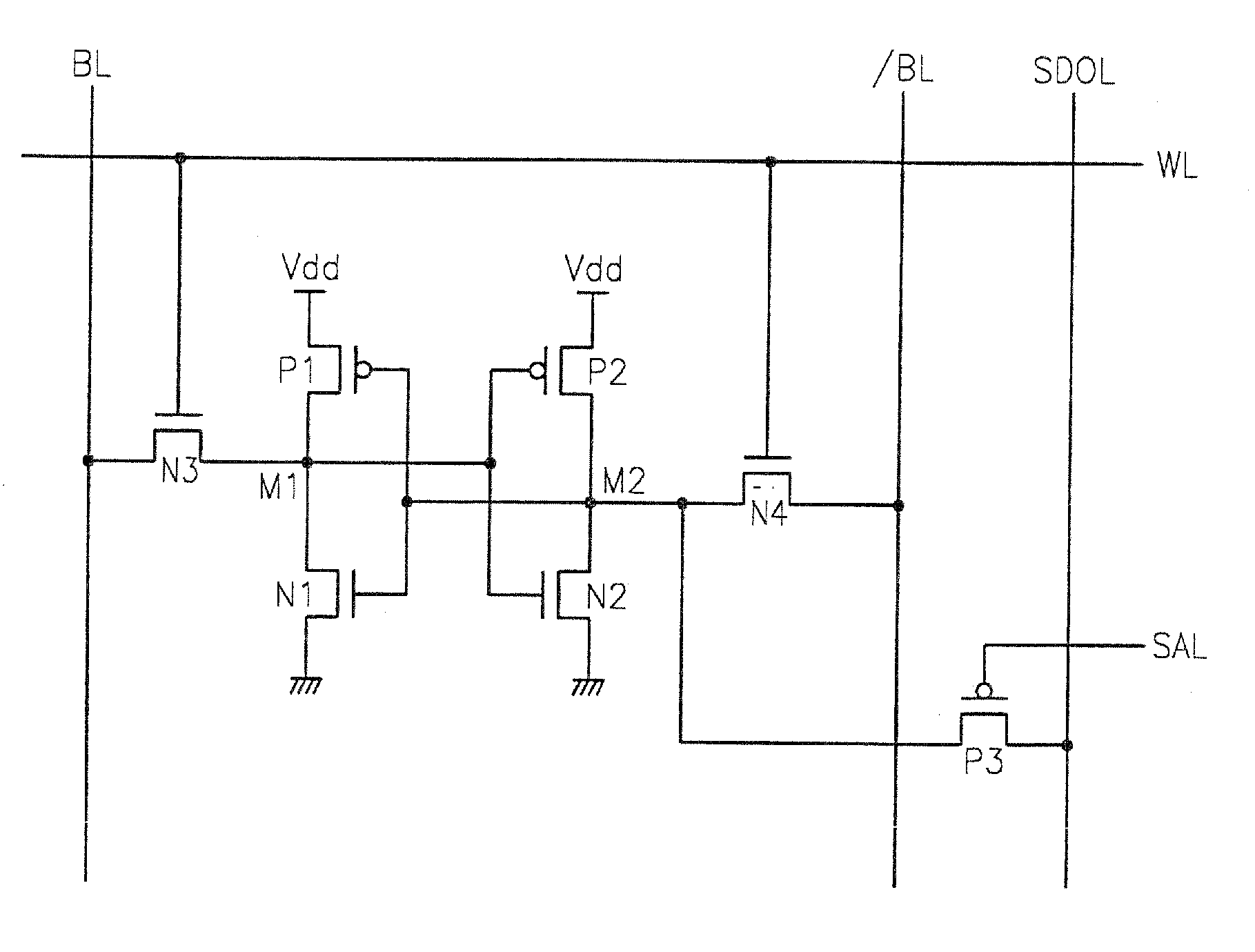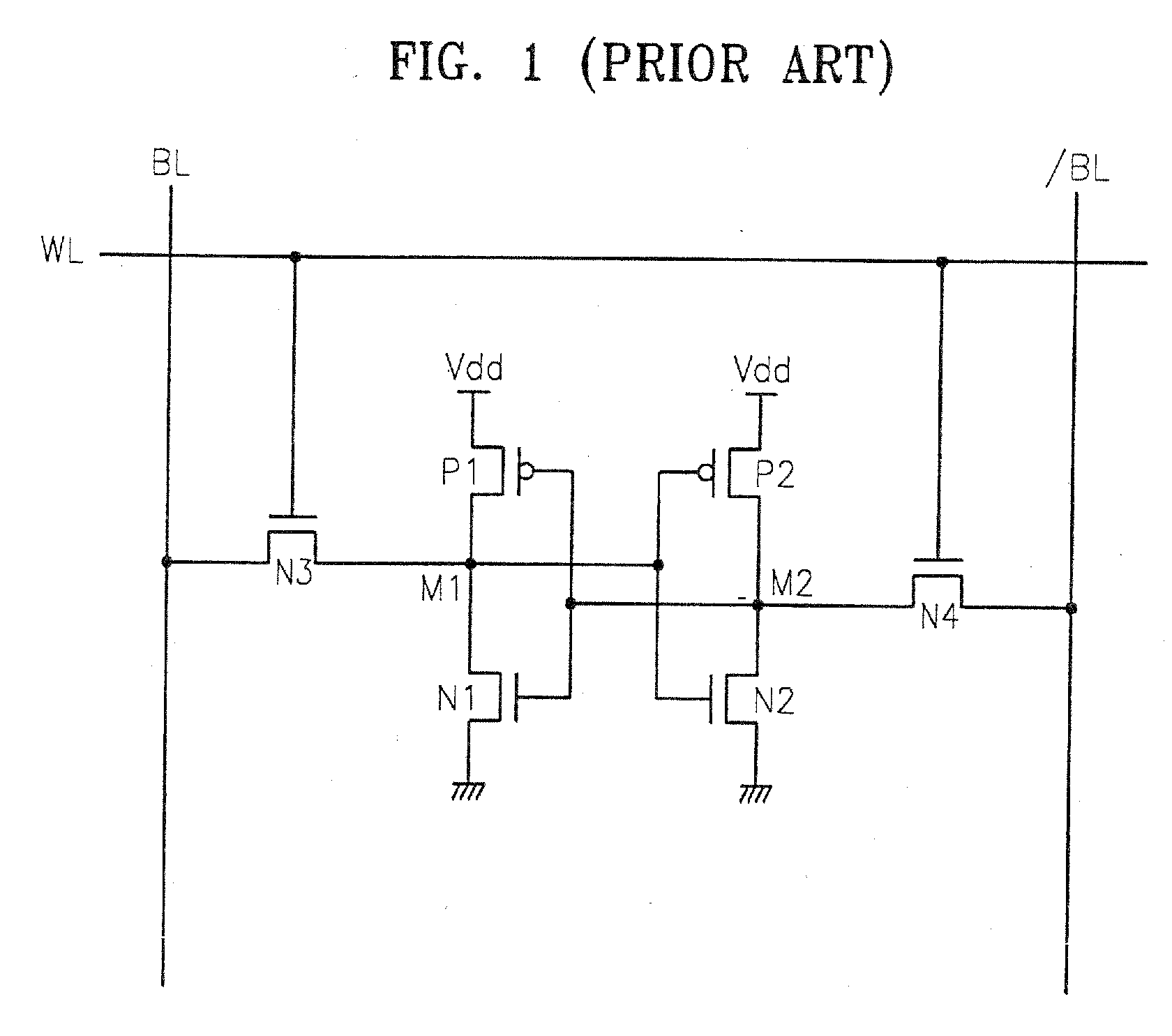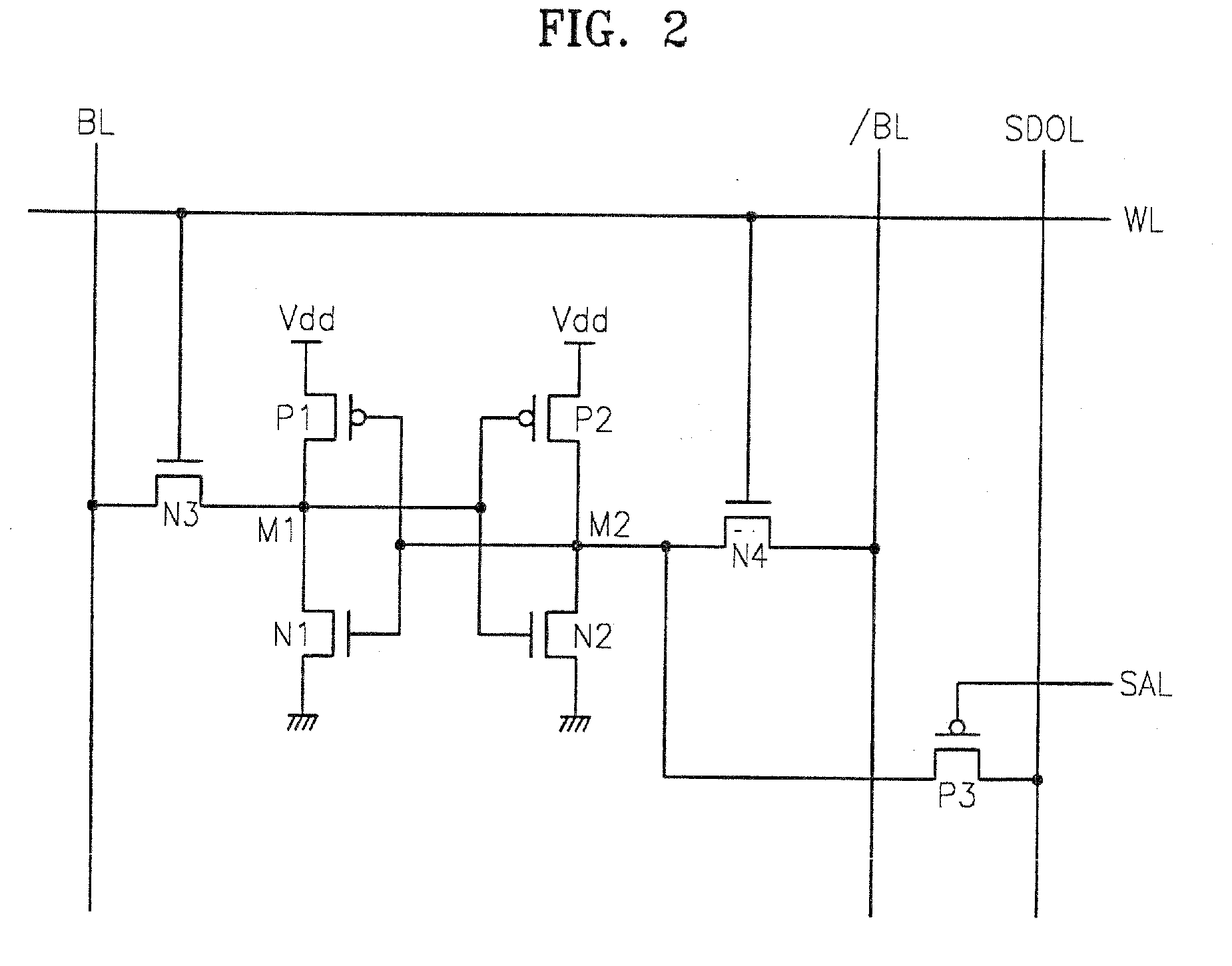Dual port semiconductor memory device
a memory device and semiconductor technology, applied in semiconductor devices, digital storage, instruments, etc., can solve the problems of limited operation speed of single-port sram devices and affect the operation speed of sram devices, so as to reduce parasitic capacitance, prevent crosstalk, and enhance the noise margins of memory cells
- Summary
- Abstract
- Description
- Claims
- Application Information
AI Technical Summary
Benefits of technology
Problems solved by technology
Method used
Image
Examples
Embodiment Construction
[0027] It should be understood that the description of this preferred embodiment is merely illustrative and that it should not be taken in a limiting sense. In the following detailed description, several specific details are set forth in order to provide a thorough understanding of the present invention. It will be obvious, however, to one skilled in the art that the present invention may be practiced without these specific details.
[0028] Referring to FIG. 2, a circuit diagram of a dual port semiconductor memory device according to one embodiment of the invention is disclosed. A first PMOS transistor P1 and a first NMOS transistor N1 constitute a first CMOS inverter, and a second PMOS transistor P2 and a second NMOS transistor N2 constitute a second CMOS inverter. An output port of the first CMOS inverter and an input port of the second CMOS inverter are connected, and an input port of the first CMOS inverter and an output port of the second CMOS inverter are connected. Therefore, ...
PUM
 Login to View More
Login to View More Abstract
Description
Claims
Application Information
 Login to View More
Login to View More - R&D
- Intellectual Property
- Life Sciences
- Materials
- Tech Scout
- Unparalleled Data Quality
- Higher Quality Content
- 60% Fewer Hallucinations
Browse by: Latest US Patents, China's latest patents, Technical Efficacy Thesaurus, Application Domain, Technology Topic, Popular Technical Reports.
© 2025 PatSnap. All rights reserved.Legal|Privacy policy|Modern Slavery Act Transparency Statement|Sitemap|About US| Contact US: help@patsnap.com



